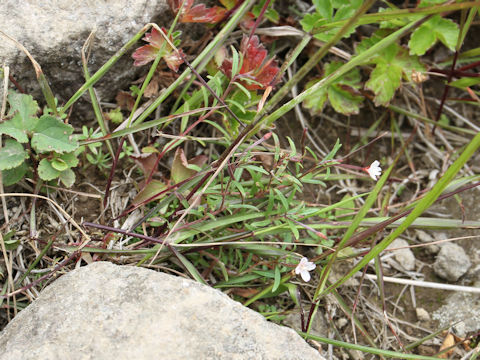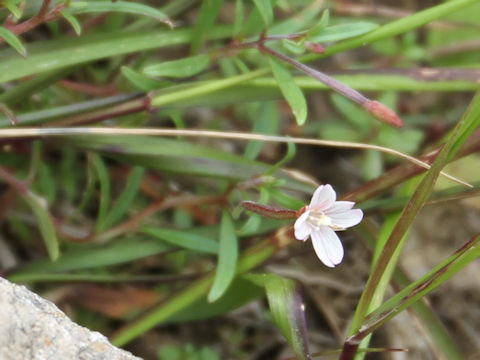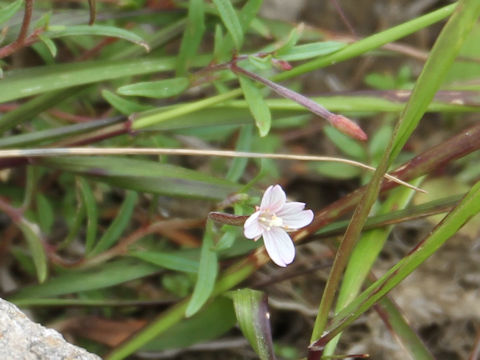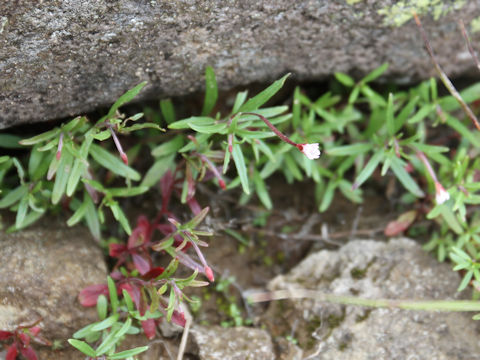
|
The "Hime-akabana" (Epilobium fauriei) belongs to Onagraceae (the Evening primrose family). It is a perennial herb that is native northward from Chubu district of Honshu to Hokkaido, the South Kuril Islands, the Kuril Islands, and the Kamchatka Peninsula. This herb grows in slightly moist gravel and rocky areas from the mountains to the subalpine zone, and can reach 3-25 cm in height. The lower leaves are small obovate, and the leaves above the middle are linear to linear-oblong and opposite. The surface of the leaves is almost hairless. The propagules may be attached to the axils around the end of fall. The small pink flowers come from the upper axils from July to September. The flower has 4 petals which are obovate with 2 shallow splits at the tip. The stigma of the pistil is club-shaped. The fruit is an elongated 4-ridged capsule.
|




